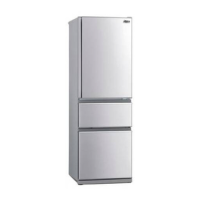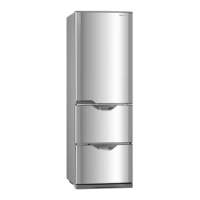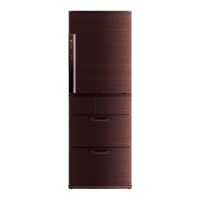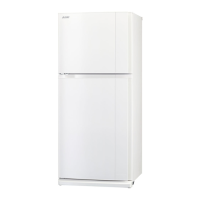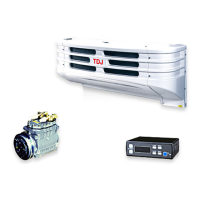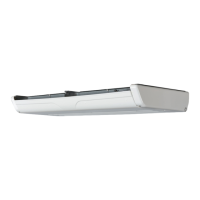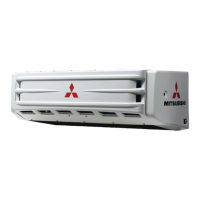37
Problem
Check
Explanation and Action
There is a
rattling sound
1
1
Are any nearby objects in contact with
the refrigerator?
Leave space around the refrigerator. When objects or walls are in
contact with the refrigerator, sounds may be heard.
2
2
Make sure that the water tank and
water supply pipe are properly
installed.
Push in the water tank until it touches the rear side. If it is out of
position, the sound of the water supply pipe can grow loud.
If there are any gaps or looseness, the water may freeze,
causing sounds to be heard.
Loud noises
Worrisome
noises (Noises
described on the
right are normal)
1
1
The noise gets louder suddenly
or the tone changes.
Immediately after beginning use, when the weather is hot,
when the doors are frequently opened and closed, and in
similar situations, the refrigerator switches to high-speed
operation and cools with high power.
2
2
A whistling sound is made after closing a door.
This is the sound of the cooling fan motor starting.
3
3
A whipping or dripping sound is
sometimes heard from inside the
refrigerator after a door is opened.
This is the creaking sound as warm air enters and expands
the plastic.
4
4
Sometimes the sound of fl owing or
boiling water can be heard.
This is the sound of the refrigerant (gas) fl owing.
5
5
A rattling or squeaking sound is made
sometimes (every 1 to 2 hours).
This is the sound of the automatic ice maker. Even when there
is no water in the water tank, the automatic ice maker and pump
make a sound about every 100 minutes.
6
6
After turning on the power, a thumping or
creaking sound may be heard in the ice
making “ICE STOP” mode (every 1 to 2 hours).
This is the sound of the operation check. The check is
performed even in the “ICE STOP” ice making mode.
Doors do not
close
Doors open
easily
1
1
Is a door making contact with food or a
case? Is too much food packed inside?
Store food so that the door does not make contact with the
food when closed. In the refrigerator compartment, store
food on the shelves and in the drawer doors store food so
that it does not make contact with the ceiling when doors
are shut and opened.
2
2
Has food fallen behind a case in a
drawer door, or is the power cord or
another object trapped between the
refrigerator and a door?
Remove any objects. Make sure that the door does not trap
objects such as food, power cords or plastic bags.
3
3
Is the refrigerator installed stably?
Are the adjustable supports making
contact with the fl oor?
Lower the adjustable supports to raise the front side slightly
and make the doors easier to close.
Page 7
The alarm
will sound
1
1
Check if the doors are closed.
Refer to “When the door alarm sounds” and “When the
alarm cannot be turned off”.
Page 32
The operation
panel does not
respond
1
1
Is lit?
Cancel the Child Safety Lock.
Page 31
2
2
Are the user's fi ngers or the operation
panel wet or dirty?
Wipe off the moisture and dirt on the operation panel and
fi ngers.
3
3
Are you wearing gloves on your hands
or sticking plaster on your fi ngers
during operation? Are you operating
with your fi ngernails?
Touch the operation panel with your fi nger directly.
4
4
Are you repeatedly touching it?
Let your fi nger off the operation panel once and then touch
it again. It will respond when you let you fi nger off.
5
5
Are seals and tapes put on the
operation panel?
Remove the seals and tapes.
Reacts without a
touch
1
1
Are there any towels, plastic bags,
papers, etc. over the operation panel?
Remove the towel, plastic bag, paper, etc.
Some icons do
not light up
1
1
Is it set to Power Save Mode?
The icons that cannot be set during Power Save Mode are
off.
Page 25
is blinking
and won't go off
1
1
Is the ice tray lock lever not locked?
If you release the ice tray lock lever while the ice tray is
operating,
will blink. Lock the ice tray lock lever and
close the ice making compartment's door.
Condensation
forms on the
outer walls
and inside the
refrigerator
Frost forms
in the freezer
compartment
Water drips onto
the fl oor
1
1
Are the doors being opened frequently,
or are there any gaps?
Close the doors so that there are no gaps.
When moisture in the air cools, it forms frost or
condensation.
When there is high humidity, condensation or frost will
form even in very small gaps.
Regarding the Vegetable Compartment
Page 19
2
2
Is the humidity high, for example is it
raining?
Condensation may form temporarily. Wipe off with a dry
cloth. Condensation may cause frost to form in the freezer
compartment. Please minimize the time when doors are
kept open.
SoundDoorOperation Panel
Condensation/ Frost
Trouble-
shooting
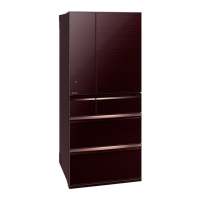
